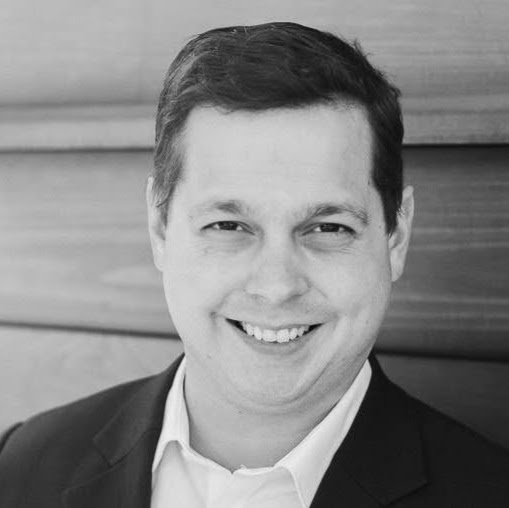Taking Care of Your Mouth Can Help Improve Your Sleep — Here’s How
- by Paul Watson
- Updated: October 25, 2022
Table of Contents
Here’s something you may not have considered before: Your dental health can impact your quality of sleep. Sure, dental health may not be the first thing you think of when it comes to getting deep, restorative sleep, but it’s certainly something worth considering. In this article, I want to explain how dental health and sleep are connected. I’ll also offer some tips from dental professionals and medical studies for maintaining healthy dental hygiene so you can sleep better.
While all of the advice and tips I’ll share won’t be for everyone, I hope you’ll get some useful information to help improve your sleep. Also, please keep in mind that we at Sleepopolis aren’t medical experts – you should always consult with your doctor for any medical advice.
The Relationship Between Dental Health and Sleep
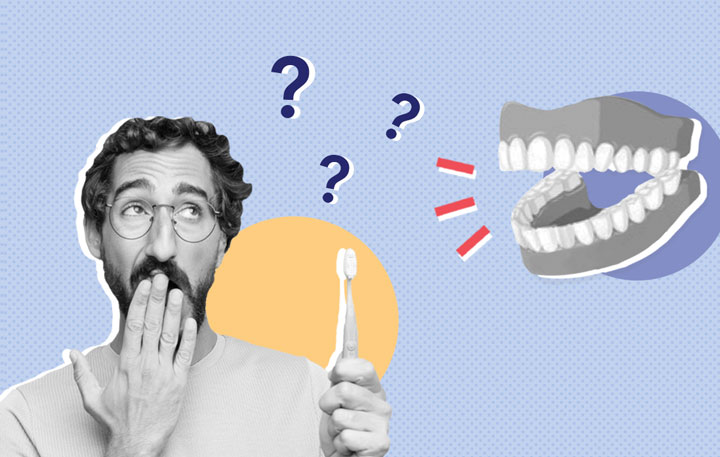 Poor dental health can lead to issues that make it difficult to rest. According to Dr. Mona Stone of Stone Surgical Arts, folks dealing with dental issues often sleep terribly. A 2018 Japanese study in Health confirms this. The study’s researchers examined 51 participants who were age 55 or older, and they found a direct correlation between poor oral health and poor quality of sleep. (1)
Poor dental health can lead to issues that make it difficult to rest. According to Dr. Mona Stone of Stone Surgical Arts, folks dealing with dental issues often sleep terribly. A 2018 Japanese study in Health confirms this. The study’s researchers examined 51 participants who were age 55 or older, and they found a direct correlation between poor oral health and poor quality of sleep. (1)
Not only can dental health affect your sleep, your quality of sleep can affect your dental health. A 2016 study in Clinical Oral Investigations examined 42,539 people and found that individuals with self-reported sleep disorders were at an increased risk of gingival (gum) inflammation. (2) Max Harland of Dentaly agrees. He told me that gum inflammation can be caused by non-restorative sleep, which may cause the body to release inflammatory hormones.
While we’ll go into other dental disorders ahead, let’s first talk about what our mouths are up to when we’re asleep.
What Happens in Our Mouths When We Sleep?
One of the primary things that happens in our mouths when we sleep is that our saliva slows down, as a 2002 study in Sleep Medicine Reviews discusses. The study also notes that jaw movements, swallowing, and sleep talking can occur. (3) But is that all that happens?
To learn more, I spoke with Dr. Chris Lewandowski of Princess Center Dentistry. He says that you’re likely not to be swallowing as much when you sleep. When this happens, bacteria builds up. The end result is stinky morning breath. Keep in mind that not brushing your teeth before bedtime will make this worse.
Dental Health Issues
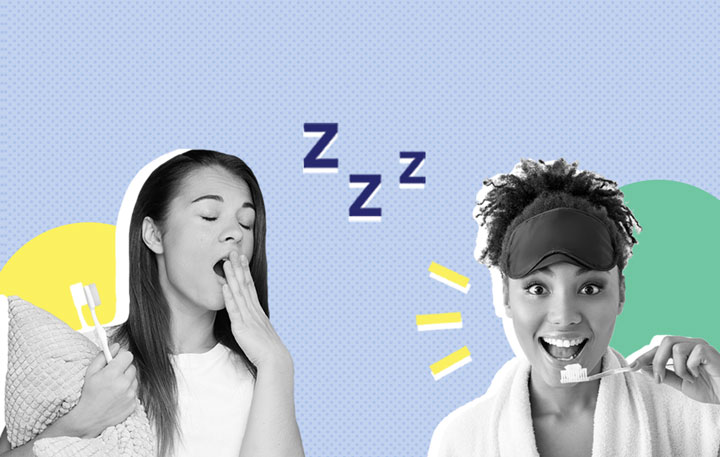 Let me state the obvious: Dental disorders can cause sleeping issues. While we’ve already discussed gum inflammation, let’s dig in to three other common dental disorders: sleep bruxism, jaw pain, and cavities.
Let me state the obvious: Dental disorders can cause sleeping issues. While we’ve already discussed gum inflammation, let’s dig in to three other common dental disorders: sleep bruxism, jaw pain, and cavities.
Sleep Bruxism
To find out the specifics of why dental disorders can negatively impact sleep, I spoke to multiple dental experts. A few of these mentioned a disorder known as sleep bruxism (SB). This is when a person clenches or grinds their teeth while asleep. So what causes this? According to Dr. Kian Singh Dhinsa of Portland Dental and co-founder of the Tooth Fairy App, high stress levels is often the main culprit behind SB, alongside issues with the bite.
Dr. Henry Hackney of Authority Dental explained to me that SB can destroy tooth enamel over time. This can cause painful tooth sensitivity, which disrupts your sleep. And according to Dr. Joseph Salim of Sutton Place Dental Associates, SB can cause you to wake up often throughout the night.
Finally, a 2013 study in Oral Diseases, found that people with SB reported a 2 – 3 times higher prevalence of obstructive sleep apnea. (4) With sleep apnea, breathing stops intermittently repeated, which is, of course, bad for your sleep.
So how can you prevent the harmful effects of SB? Dr. Salim recommends speaking with your dentist about creating a night guard to prevent grinding and protect your teeth. According to Dr. Stone, in addition to a night guard, SB can be treated by behavioral therapy, stress management, physical therapy, and — in severe cases — muscle relaxants.
Jaw Pain
When I spoke with Dr. Lewandowski, he told me that jaw pain is another sleep disorder that can disrupt sleep. I should note that jaw pain is not the same as SB. While SB can cause jaw pain, it could be due to an infection. Dr. Hackneye agrees, saying that if jaw pain is a result of infection, it can spread to other areas, increasing discomfort and making it harder to sleep.
However, Dr. Jeff Rodgers, a member of our Expert Network and a practitioner at Sleep Better Dental Sleep Medicine, notes that before recommending a bruxism appliance, patients should first be considered for a sleep study to rule out sleep apnea. Bruxism appliances can exacerbate the negative effects of sleep apnea, so it’s important to determine if the patient suffers from sleep apnea first.
Cavities
After further discussion with Dr. Hackneye, he explained that cavities can also disrupt sleep, since the resulting pain can make it difficult to get some shuteye. This assertion was confirmed by Dr. Salim, Dr. Lewandowski, and Dr. David B. Fox of Fox Dentistry. So if you’ve been doing your best to prevent cavities, you’re doing the right thing.
Acid Reflux
While acid reflux isn’t a dental condition, it can impact dental health. Dr. Salim says acid reflux can cause acid from the digestive system to enter the mouth at night. The acid’s eroding effect can result in tooth decay and/or sensitivity. If you suffer from acid reflux, he recommends using over-the-counter antacids before going to bed. He also suggests avoiding acidic foods before bedtime.
Next, I spoke with a few medical experts to find out ways to get better sleep if you have any of the other disorders.
Dental Recommendations for Better Sleep
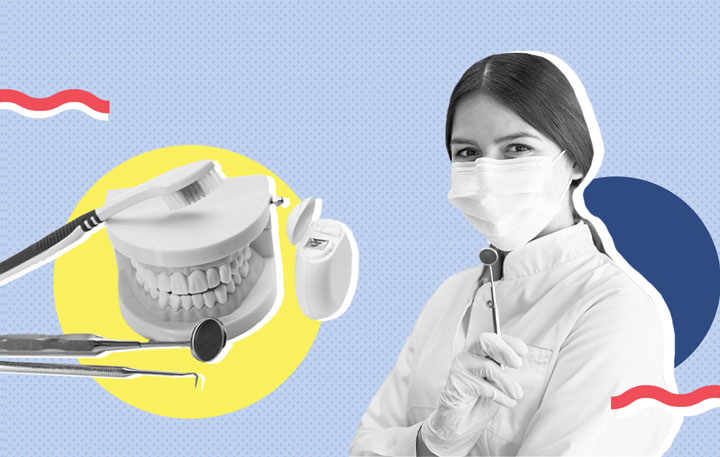 General Tips for Good Dental Hygiene
General Tips for Good Dental Hygiene
Let’s start with the tips that are likely to pertain to most people. These include brushing and flossing daily, visiting your dentist regularly, considering what you drink, and avoiding smoking. We’ll discuss recommendations for folks who have just had dental surgery a bit later.
Brush and floss your teeth at least once a day.
Brushing your teeth daily can help reduce your chance of sleep apnea. In a 2013 Turkish study in World Biomedical Frontiers that examined 165 patients, researchers concluded that people who don’t brush their teeth daily were at a higher risk of sleep apnea. (5)
Dr. Salim recommends using prescription toothpaste before bedtime to decrease tooth sensitivity and cavity formation. He also says flossing before going to bed is critical for dental health.
Another 2017 study in Clujul Medical suggests that flossing can actually help improve sleep. In this study, researchers examined 230 dental students. They found that while those with poor dental health were more prone to sleep issues and fatigue, participants who flossed daily had good sleep and more energy. (6)
Visit your dentist regularly.
If it’s been a while since your last dentist visit, it may be time to go again. Dr. Fox says routine visits to your dentist are important for dental health because early signs and symptoms of larger oral problems can be recognized and treatment can be discussed. Dr. Lewandowski also agrees, saying that regular cleanings and checkups can help prevent dental issues that can make sleeping difficult.
Watch what you drink.
While wine in the evening might sound nice, it may not be the best for your mouth when you sleep. When I spoke to Dr. Diana Wu of Issaquah Premier Dental, she recommended avoiding alcohol before bedtime as alcohol relaxes the throat muscles, which increases the chance of snoring and causing breathing difficulty. Additionally, a 2004 study in Public Health Nutrition claims that you can reduce the likelihood of dental erosion by limiting your intake amount and frequency of juice or soft drinks. (7)
Don’t smoke.
Another tip Dr. Wu gave me was straightforward: Avoid smoking. A 2001 study in the American Journal of Public Health backs up this advice. In it the researchers emphasized the connection between oral health risks and regular tobacco consumption, finding that people who smoke are 1.6 times more likely to have a dental disease than those who don’t smoke. (8)
Dental Surgery and Sleep Recommendations
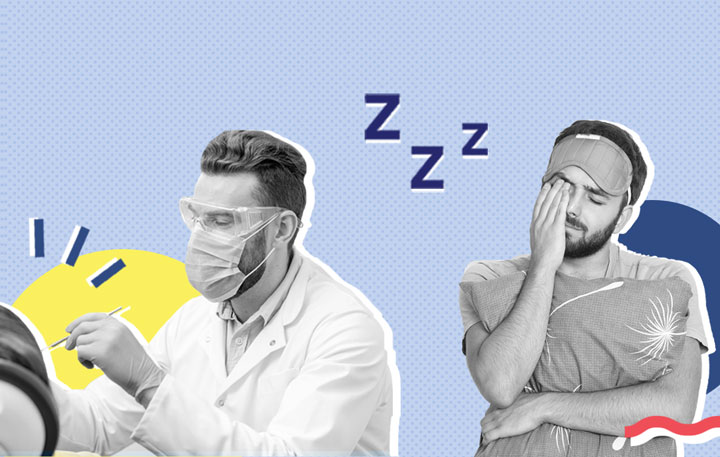 Now we’ll address some tips for folks who have just had dental surgery. If your surgery was extensive, Dr. Salim recommends using mild painkillers for a few nights. He says that taking one pill of Tylenol and one pill of Advil can significantly help with pain management.
Now we’ll address some tips for folks who have just had dental surgery. If your surgery was extensive, Dr. Salim recommends using mild painkillers for a few nights. He says that taking one pill of Tylenol and one pill of Advil can significantly help with pain management.
To help prevent issues such as infections, Dr. Salim notes that you’ll want to follow up with your dentist regarding your post-surgical instructions. According to Dr. Wu, you can also help prevent infections by rinsing with salt water twice a day.
What you drink is also important for healing after dental surgery. Dr. Hackneye says to avoid alcohol for at least 72 hours after surgery, saying that it can impact the healing process since it will worsen your quality of sleep, which he notes is crucial for recovery.
I asked some of the experts for any specific food recommendations. While Dr. Lewandowski recommends eating pineapple after surgery to help reduce any inflammation, Dr. Stone recommends sticking with protein shakes since they’re not likely to disrupt the area of your mouth where the surgery took place.
Sleeping on the right mattress can also help with post-surgery. When lying on your mattress, Dr. Lewandowski, Dr. Wu, and Dr. Stone recommend keeping your head elevated to promote healing and reduce pain. To make sure you stay elevated, choose an adequately firm mattress. When sleeping on a firmer surface, the bones absorb most of the pressure, which means less stress on the muscles, veins, and arteries. Muscles are also less strained, and circulation is improved.
Last Word From Sleepopolis
That’s a wrap on of our recommendations for sleeping better in spite of dental disorders and dental surgery! Keep in mind that we aren’t medical experts, so please direct any sleep-related medical concerns you may have to your medical provider.
References
- Sato, M et al. Relationship among Health Related Quality of Life, Quality of Sleep, and Oral Health Condition. Health. Feb 2018
- Carra, M et al. Sleep disorders and oral health: a cross-sectional study. Clinical Oral Investigations. May 13, 2016
- Thie, N et al. The significance of saliva during sleep and the relevance of oromotor movements. Sleep Medicine Reviews. 2002
- Huynh, N et al. Interactions between sleep disorders and oral diseases. Oral Diseases. Jun 25, 2013
- Cinar, A et al. Relationship between oral health, diabetes management and sleep apnea. World Biomedical Frontiers. Apr 17, 2013
- Asawa, K et al. Influence of sleep disturbance, fatigue, vitality on oral health and academic performance in indian dental students. Clujul Medical. Jul 15, 2017
- Moynihan, P et al. Diet, nutrition and the prevention of dental diseases. Public Health Nutrition. Feb 2004
- Arbes Jr, S et al. Environmental Tobacco Smoke and Periodontal Disease in the United States. American Journal of Public Health. Feb 2001
Subscribe Today!
Get the latest deals, discounts, reviews, and giveaways!
